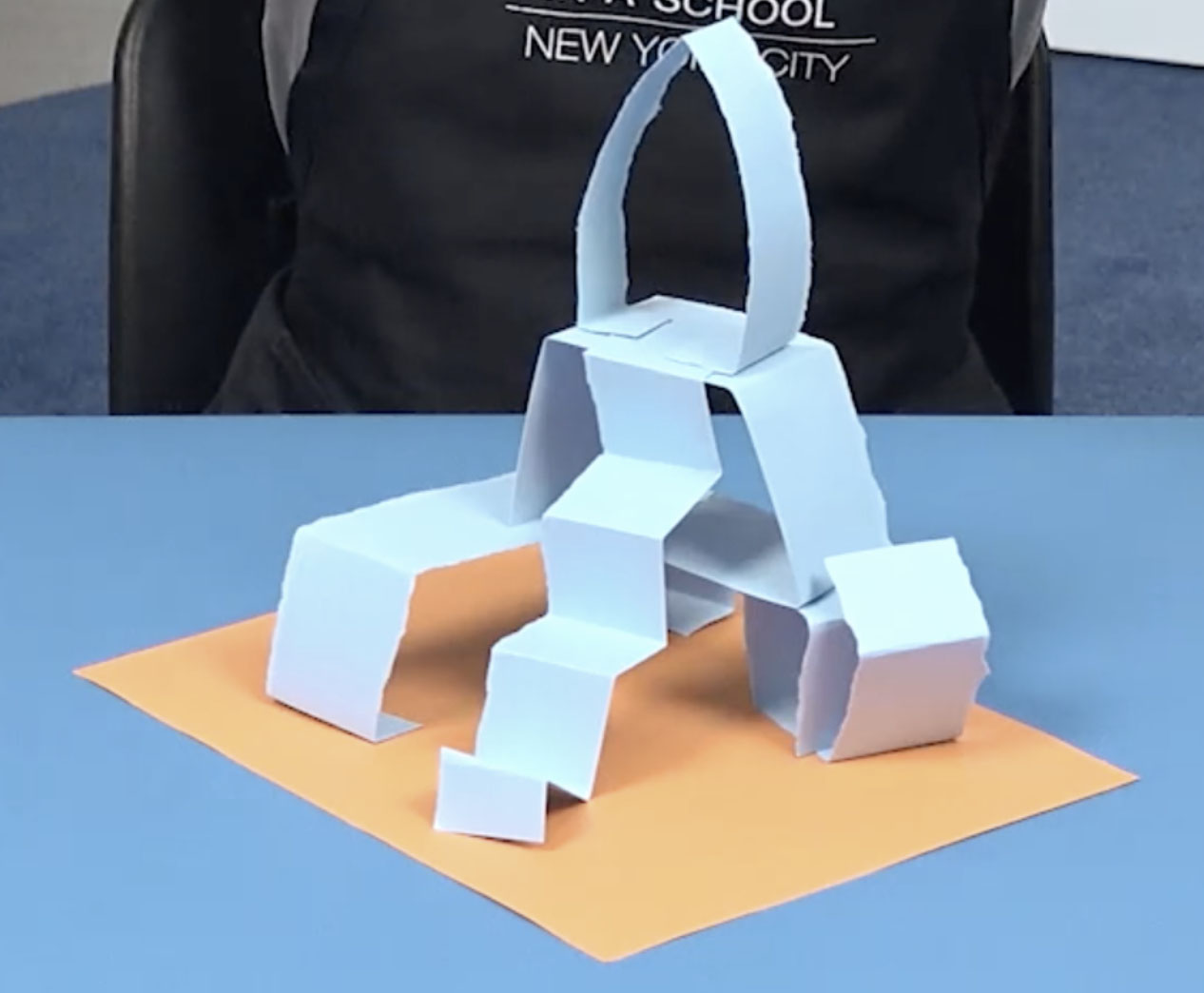Overview
In this activity, children will explore different ways to fold and arrange paper to make a sculpture.
Materials and Tools
Two sheets of paper. These can be construction paper, or any kind of scrap paper you can find in your home, such
as printer paper, a paper bag, pieces of magazines, newspaper or even old envelopes.
Activities
Step 1: Tearing Strips
Are you ready to make a sculpture? First, let’s use our hands to tear our paper and make some strips. First, hold your paper to tear the shorter side, pinch your fingers close together and wiggle, wiggle a little bit.
Then, pull one side of the paper to the front, and the other side to the back.
Keep tearing to make strips with one whole sheet of paper. See if you can get 6 strips.
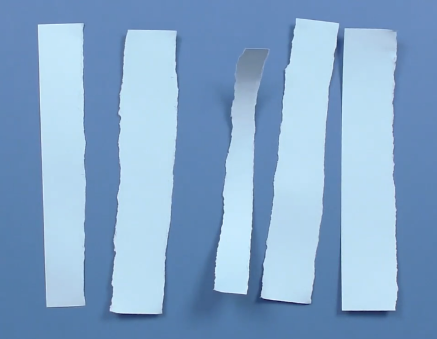
Step 2: Folding Paper
How can you use your hands as tools to make these strips of paper 3-dimensional? Do you have any ideas?
In the last lesson, you twisted your paper. This time, let’s try folding.
Hold one side of your strip and bend it to meet the other side. Then press along the edge.
Step 3: Make a Folded Paper Stand
How can you make your folded paper stand?
Try to open it up and spread out the bottom pieces. Is it standing up now? It is 3-dimensional!
Do you notice what shape it makes? It looks kind of like a triangle! It has a space in the middle.
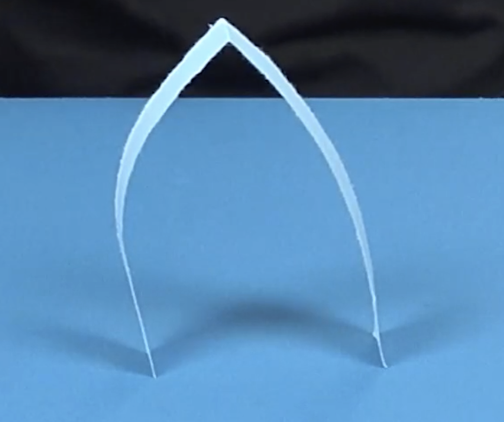
Step 4: Adding “Feet” to Help Paper Stand
It might seem a little wobbly. Is there a better way to make it stand?
We can think about what helps people balance – our feet!
How can you give your strip of paper “feet” to help it stand? You can fold them. Fold just a little bit on each side – bend and press. Now is it standing? The feet help it balance!
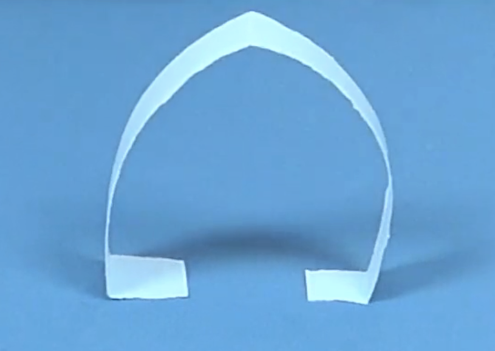
Step 5: Folding Paper into a Shape
What will happen if you fold your paper more than once?
Try folding it on one side, then fold it again on the other side. It also has a space in the middle, it might be a rectangle or square shape.
How can you make this piece stand? You can give it feet, just like your last piece.
Step 6: Folding an Accordion-Fold
Let’s try one more thing. You folded once to make a triangle, and twice to make a rectangle or square. What do you think will happen if you fold your paper over and over again?
Give it a try! Start by folding one direction and pressing down, then turn your strip over and fold the other direction. Go back and forth and keep folding. This is called an accordion fold.
What happened? Wow! Does it look like a zig-zag line? Does it remind you of anything?

Step 7: Arranging Folded Paper: Over, Under, Through
Get your second sheet of paper to use as a base. A base is a home for our sculpture, a space to build on top of.
How can you arrange your folded papers? Let’s try some ideas.
Maybe you can put your taller shape over your shorter shape. Which one will go under? Which piece can go through the space in the middle of the shapes?
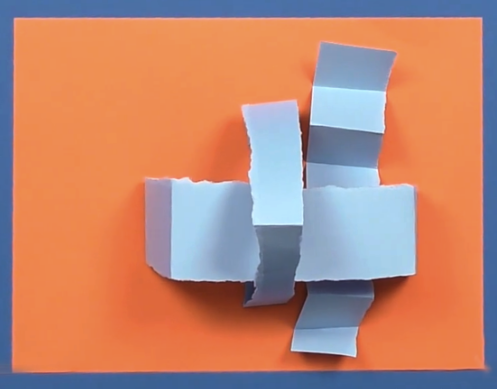
Step 8: Arranging Folded Paper: Stacking
Let’s try something else.
Can you stack your pieces and put one on top of another?
How can you make them stand? Remember that the bottom needs to be bigger than the top to balance.

Step 9: Arranging Folded Paper: Connecting
Are there other ways to arrange these papers?
You can put shapes on both sides of your base and use your accordion-folded piece to connect them.
If you were very small, how can you imagine moving through this space?
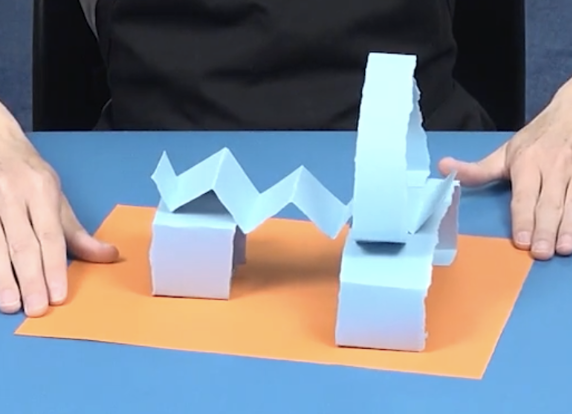
Step 10: Looking from Different Angles
Carefully turn your sculpture and look at it from a different angle.
What spaces do you notice if you look at it from the side?
Look at it from a different side. Do you notice any new spaces?
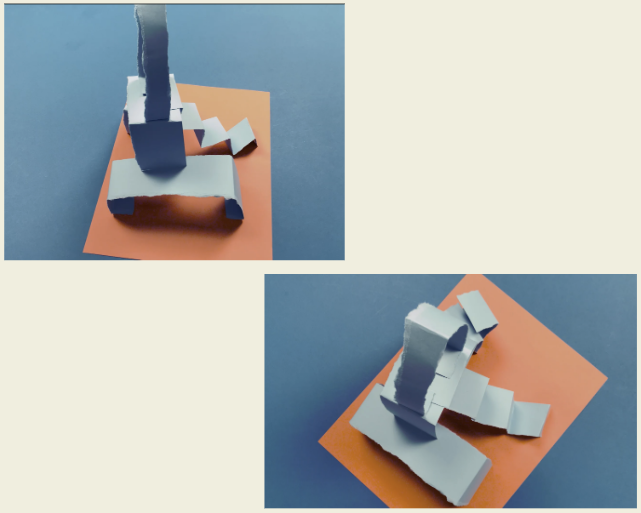
Step 11: Reflection
Take a look at your finished sculpture.
How did you fold your strips? What kinds of shapes did you make by folding? How did you build with your pieces?
If you have a camera, you can take a picture of your favorite arrangement of objects. Or you can always draw it.
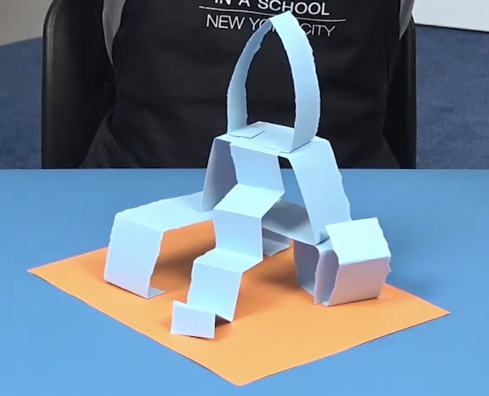
Video
Credits
Written By:
Andrea Burgay, Director of Digital Learning
Copyright © 2023 Studio in a School NYC LLC

